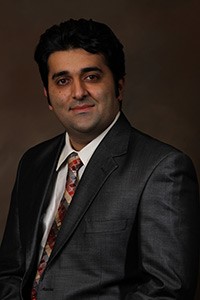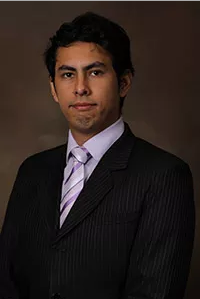All are welcome to two invited seminars on Wednesday, November 19, 2014. These will be given by two Chemical Engineering Ph.D. candidates; Raul Velasco, and Hossein Ghiassi. Hossein will speak on “A Detailed Investigation of the Oxidation of Soot” and Raul will address “Analysis of Production of Fluids from Tight Formations.”
The seminar will be from 3:00 to 4:00 p.m. on Wednesday, November 19, 2014, in WEB L102. There will be light refreshments afterwards.

A Detailed Investigation of the Oxidation of Soot
Abstract:
Soot emissions from combustion devices such as diesel engines, gas turbines and furnaces etc. cause serious environmental and human health problems. Soot may be formed when carbonaceous fuels are burned under local reducing conditions. The emission of soot is determined by the competition between soot formation and oxidation; both contribute to the final characteristics of the particles in terms of concentration, morphology and chemical composition. Formation had been studied to a greater extent due to intrinsic possibility to isolate this process from oxidation; however, the oxidation process has not been as well characterized. This talk will focus on the theoretical development and experimental validation of a new model for soot oxidation where OH is the principle oxidizer. This model aims to improve the prediction of soot oxidation by considering aspects that had not been previously considered, principally the fraction of active area as well as the size of the soot particle, in addition to traditional parameters such as OH concentration and temperature.
Biography:
Hossein Ghiassi is completing his PhD in the Department of Chemical Engineering at the University of Utah, after nearly 5 years working in industry, where he worked as a process engineer and project engineer. He started the PhD program in Fall 2011, coming with a master degree in separation and transport phenomena and a bachelor degree in petroleum refining and petrochemical processes. His current research interests are in the areas of soot formation and oxidation, transport theory of nanomaterials, and combustion chemistry. Outside of professional interests, he plays violin in an ensemble and loves oil painting. In this presentation Hossein will discuss his research and efforts to understand the oxidative reactivity of soot particles.

Analysis of Production of Fluids from Tight Formations
Abstract:
The United States is poised to become the largest oil producer in the current decade due to the unprecedented growth in oil production from unconventional reservoirs (EIA, 2012) such as the Bakken or the Eagle Ford. Even though these predictions are positive, there are still many challenges and unknowns associated with these reservoirs that have permeabilities in the millidarcy and even in the nanodarcy scale. Analytical and numerical advances are of prime importance to both determine important reservoir parameters and run simulations that accurately represent multiphase flow in these systems.
Material Balance is a simple method for calculating original hydrocarbon in place in conventional reservoirs. It has served as a simple and a fast tool used to assess the production potential of a reservoir and as a way to support or question numerical simulation results. Typical application of material balance principles is in boundary-dominated reservoirs. The low and ultra-low permeability reservoirs (shales), which have seen significant activity in the last few years, remain in transient flow for long periods of time. A new and better formulation is required for analyzing these systems using the material balance method.
Material balance can be used in a semi-analytical method to interpret transient flow, and more specifically, construct pressure profiles at different times during oil, gas and water production. Since this material balance method only requires pressure-volume-temperature (PVT) data and production information, it can be used to determine the effective permeability for the system. This method can be used with high level of accuracy for single-phase flow systems, and gives a reasonable match for two and three-phase systems as evidenced by comparison of the results with output from a commercial simulator. When pressure profiles are obtained, many other properties of relevance can be obtained such as oil and gas saturations distributions.
On the numerical side, fracture flow can conveniently be represented by the Discrete Fracture Network (DFN) formulation. However, this method can lead to coarsening of the fracture pressure distributions due to the fact that fractures share control volumes with the matrix.
A new hybrid method is proposed to implement fracture control volumes without sacrificing much computational performance and meshing convenience. The hybrid method adds a new domain for the fracture control volumes, therefore providing the capability to add fracture rock properties such as relative permeability tables, porosity and permeabilities.
References
http://www.eia.gov/analysis/studies/usshalegas/pdf/usshaleplays.pdf
Biography:
Raul Velasco is a PhD student in the Chemical Engineering department at the University of Utah. He graduated from the University of Kansas with a bachelor of science in Petroleum Engineering and a minor in math. He has been involved in research in neutrino detection, reservoir engineering, and numerical simulation and he is a recipient of the John Zink scholarship award and an EGI fellowship.